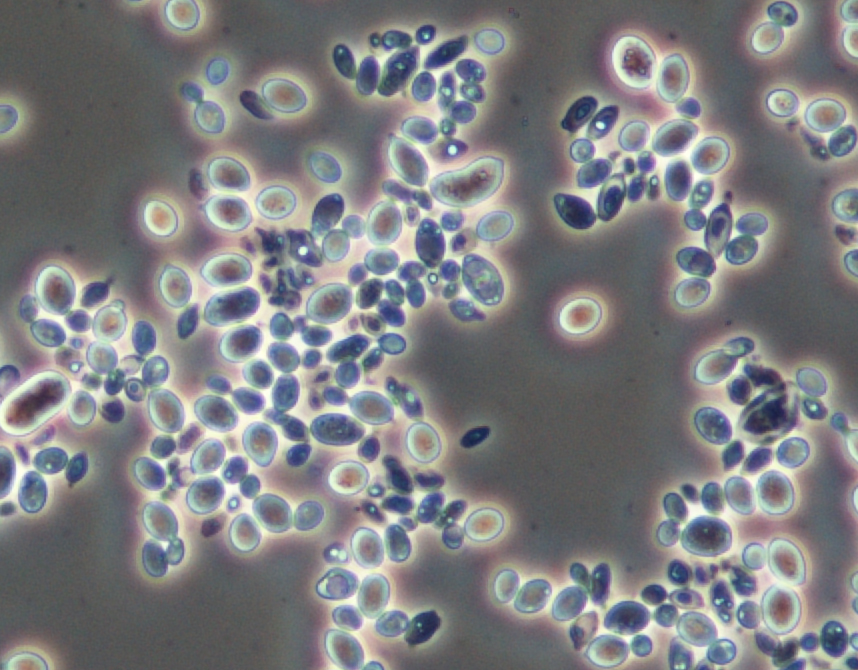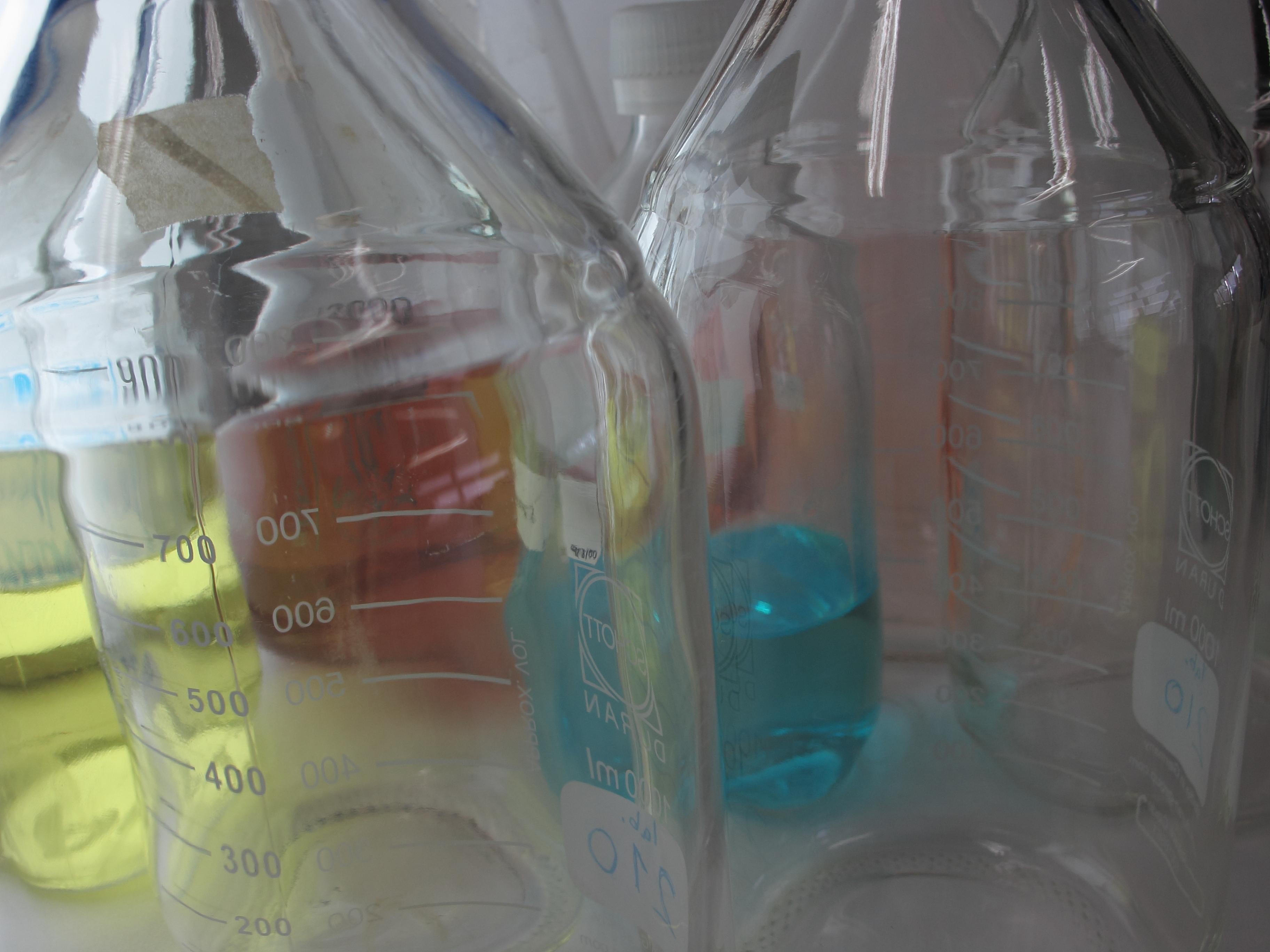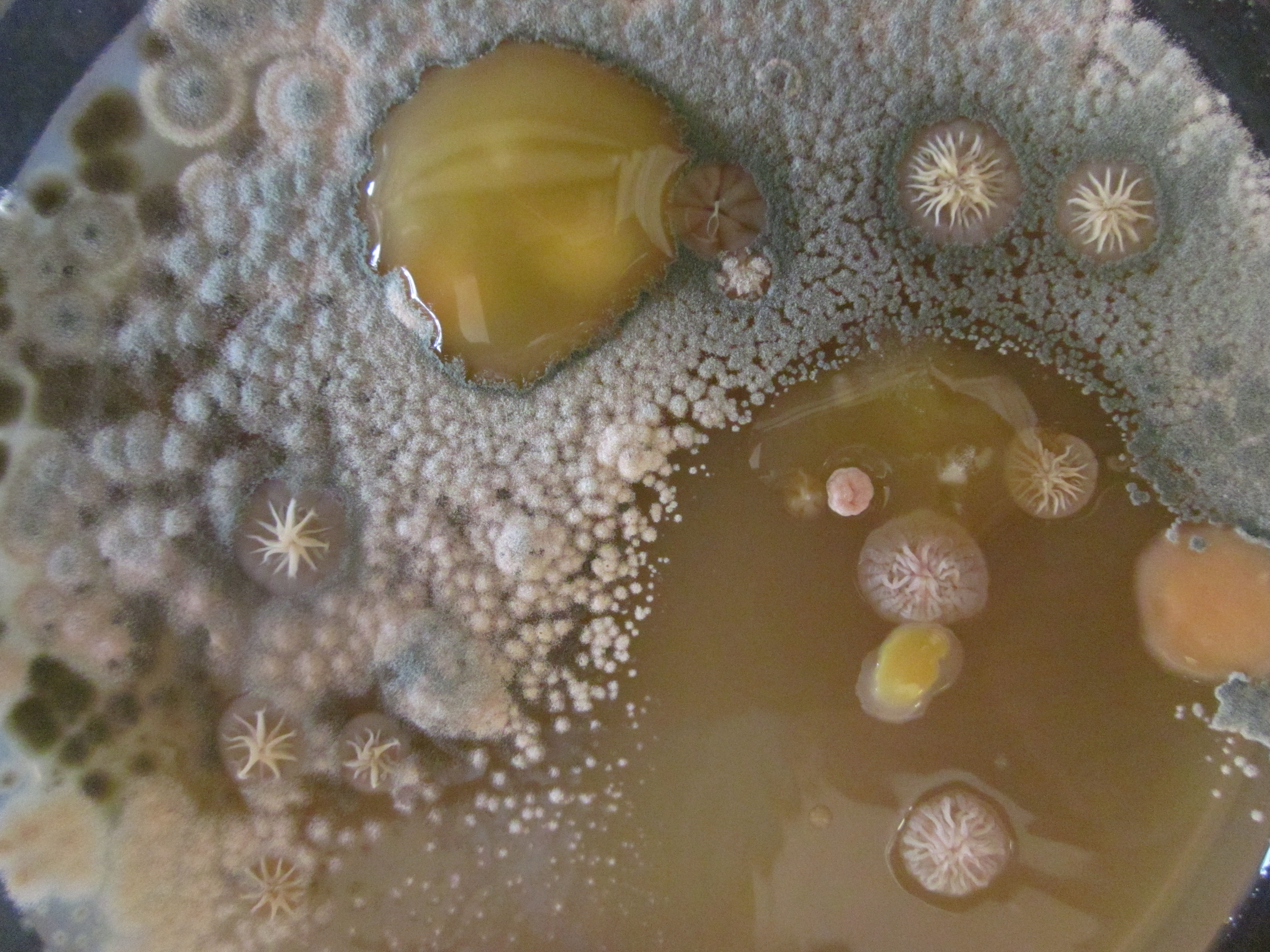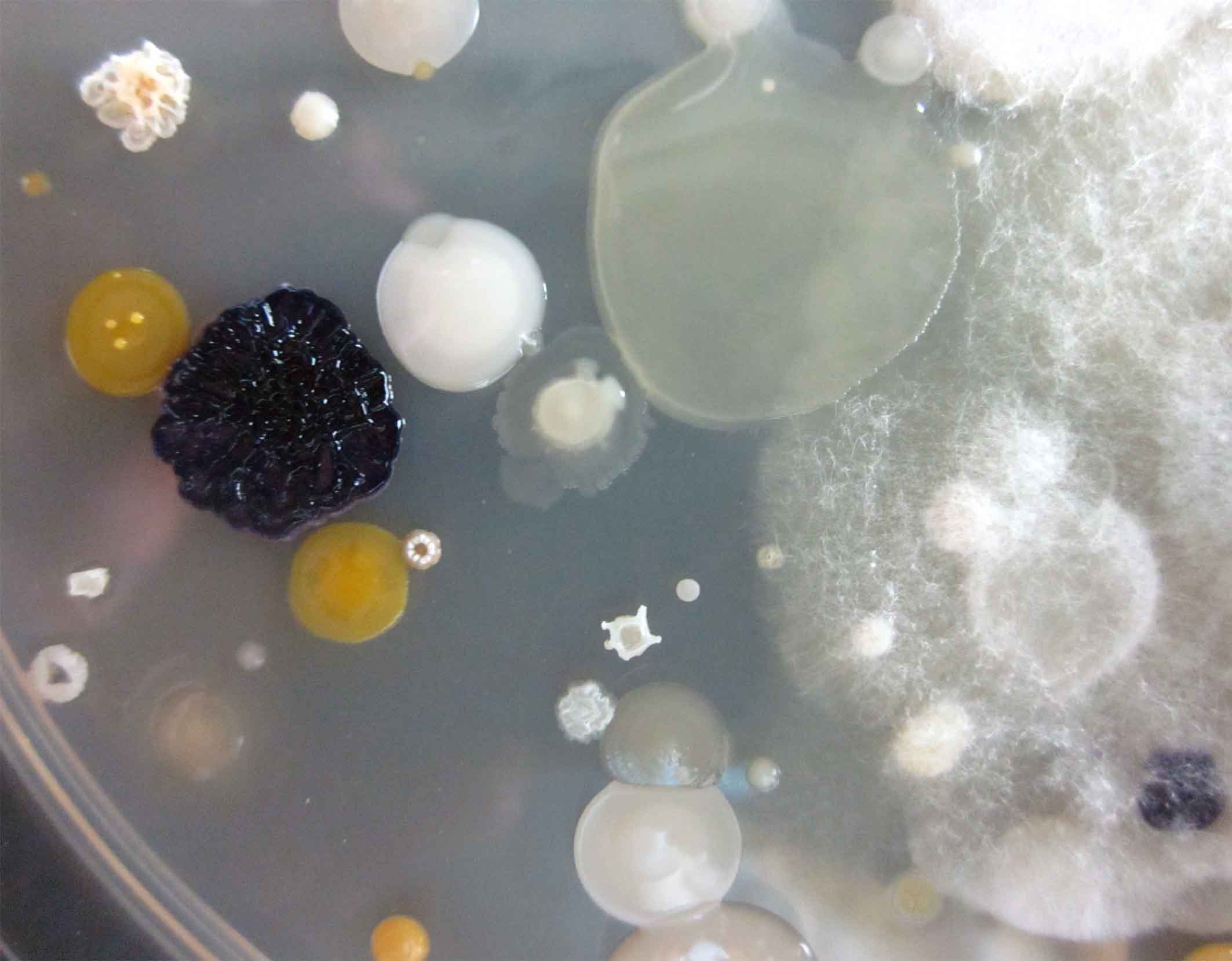Hasta la fecha, soy autor de 4 patentes, varias licencias de derechos, más de 200 comunicaciones a congresos nacionales e internacionales y he publicado más de 170 artículos científicos. Algunas de los artículos de investigación publicados en revistas y libros de reconocido prestigio son los siguientes:
A two primers random amplified polymorphic DNA procedure to obtain polymerase chain reaction fingerprints of bacterial species. 2001. Electrophoresis 22: 1086-1089.
An effective, rapid and simple single-step method for total RNA extraction from bacteria and yeast. 2002. Journal of Microbiological Methods 47: 59-63.
Rapid identification of Clavibacter michiganensis subspecies sepedonicus using two primers random amplified polymorphic DNA (TP-RAPD) fingerprints. 2002. European Journal of Plant Pathology 108: 179-184.
A New Species of Devosia That Forms a Unique Nitrogen-Fixing Root-Nodule Symbiosis with the Aquatic Legume Neptunia natans (L.f.) Druce. 2002. Applied and Environmental Microbiology 68: 5217-5222.
Xylanimonas cellulosilytica gen. nov., sp. nov., a xylanolitic bacterium isolated from a decayed tree (Ulmus nigra). 2003. International Journal of Systematic and Evolutionary Microbiology 53 (1): 99-103.
Description of Devosia neptuniae sp. nov. that nodulates and fixes nitrogen in symbiosis with Neptunia natans, an aquatic legume from India. 2003. Systematic and Applied Microbiology 26: 47-53.
Pseudomonas rhizosphaerae sp. nov., a novel species that actively solubilizes phosphate in vitro. 2003. International Journal of Systematic and Evolutionary Microbiology 53: 2067-2072.
Genomic fingerprinting of Frankia strains by PCR-based techniques. Assessment of a primer based on the sequence of 16S rRNA gene of Escherichia coli. 2003. Plant and Soil 254: 115-123.
Genetic diversity of bradyrhizobial populations from diverse geographic origins that nodulate Lupinus spp. and Ornithopus spp. 2003. Systematic and Applied Microbiology. 26 (4): 611-623. 2004.
Paenibacillus favisporus sp. nov. a xylanolytic bacterium isolated from cow faeces. 2004. International Journal of Systematic and Evolutionary Microbiology 54: 59-64.
Xylanibacterium ulmi gen. nov., sp. nov., a novel xylanolytic member of the family Promicromonosporaceae. 2004. International Journal of Systematic and Evolutionary Microbiology 54: 557-561.
Cellulomonas xylanilytica sp. nov., a cellulolytic and xylanolytic bacterium isolated from a decayed elm tree. 2004. International Journal of Systematic and Evolutionary Microbiology 54: 533-536.
Microbacterium ulmi sp. nov., a xylanolytic, phosphate-solubilizing bacterium isolated from sawdust of Ulmus nigra. 2004. International Journal of Systematic and Evolutionary Microbiology 54: 513-517.
Identification of microorganisms by PCR amplification and sequencing of a universal amplified ribosomal region present in both prokaryotes and eukaryotes. 2004. Journal of Microbiological Methods 56(3): 413-426.
Pseudomonas lutea sp. nov., a novel phosphate-solubilizing bacterium isolated from rhizosphere of grasses. 2004. International Journal of Systematic and Evolutionary Microbiology 54: 847-850.
Caracterización de cepas aisladas de nódulos efectivos de leguminosas del grupo de inoculación cruzada de Rhizobium leguminosarum en suelos del noroeste de España. 2004. EN PASTOS Y GANADERÍA EXTENSIVA (B. García Criado, A. García Ciudad, B. R. Vázquez de Aldana, I. Zabalgogeazcoa, Eds.). I. S. B. N.: 84-688-6576-1. Depósito legal: SA-620-2004. Salamanca, Spain. Pp: 157-161.
Bradyrhizobium betae sp. nov. isolated from roots of Beta vulgaris affected by tumour-like deformations. 2004. International Journal of Systematic and Evolutionary Microbiology 54: 1271-1275.
Mycobacterium psychrotolerans sp. nov., isolated from a pond near an uranium mine.2004. International Journal of Systematic and Evolutionary Microbiology 54: 1459-1463.
Sphingomonas phyllosphaere sp. nov., a novel bacterium isolated from phyllosphere of Acacia caven in Argentina. 2004. International Journal of Systematic and Evolutionary Microbiology 54: 2147-2150.
Agromyces ulmi sp. nov., xylanolytic bacteria from Ulmus nigra in Spain. 2004.International Journal of Systematic and Evolutionary Microbiology 54: 1987-1990.
Phenotypic and genotypic characterization of rhizobia from diverse geographical origin that nodulate Pachyrhizus species. 2004. Systematic and Applied Microbiology 27: 737-745.
Identificación de microorganismos productores de fenoles volátiles en vino tinto de la región portuguesa del Dao. 2004. Tecnología del Vino 21: 71-74.
Paenibacillus xylanilyticus sp. nov. an airbone xylanolytic bacterium. 2005. International Journal of Systematic and Evolutionary Microbiology 55: 405-408.
Nodulation of Lupinus by strains of the new species Ochrobactrum lupini sp. nov. 2005. Applied and Environmental Microbiology 71: 1318-1327.
Martelella mediterranea gen. nov., sp. nov., a novel alpha-proteobacterium isolated from a subterraneous saline lake. 2005. International Journal of Systematic and Evolutionary Microbiology 55: 955-959.
Paenibacillus phyllosphaerae sp. nov. a xylanolytic bacterium isolated from the phyllosphere of Phoenix dactylifera. 2005. International Journal of Systematic and Evolutionary Microbiology 55: 743-746.
Paenibacillus rhizosphaerae sp. nov., a species isolated from Cicer arietinum rhizosphere. 2005. International Journal of Systematic and Evolutionary Microbiology 55: 1305-1309.
Reclassification of Agrobacterium ferrugineum LMG 128 as Hoeflea marina gen. nov., sp. nov. 2005. International Journal of Systematic and Evolutionary Microbiology 55: 1163-1166.
Pseudomonas argentinensis sp. nov., a novel yellow pigment-producing bacterial species, isolated from rhizospheric soil in Cordoba (Argentina). 2005. International Journal of Systematic and Evolutionary Microbiology 55: 1107-1112.
Phyllobacterium trifolii sp. nov. nodulating Trifolium and Lupinus in Spanish soils. 2005. International Journal of Systematic and Evolutionary Microbiology 55: 1985-1989.
Terrabacter terrae sp. nov. ,a novel actinomycete isolated from soil in Spain. 2005.International Journal of Systematic and Evolutionary Microbiology 55: 2491-2495.
The coexistence of symbiotic and pathogenic genes in different megaplasmids in Rhizobium rhizogenes strains enables them to induce nodules and tumours or hairy roots in plants. 2005. Molecular Plant-Microbe Interactions 18: 1325-1332.
Reservorio. 2005. ¿TE ATREVES…? I CONCURSO CIENTÍFICO-LITERARIOS. (Elena Feduchi y Alicia Irurzun, Eds.). Editorial Hélice. I. S. B. N.: 84-934106-3-2. Depósito legal: M. 46.276-2005. Impreso en España. Pp: 105-118.
Application of horizontal staircase electrophoresis in agarose minigels to the random intergenic spacer analysis of clinical samples. 2005. Electrophoresis 26: 4402-4410.
Acetobacter oeni sp. nov. isolated from spoiled red wine. 2006. International Journal of Systematic and Evolutionary Microbiology 56: 21-24.
A new approach for separating LMW RNA molecules by staircase electrophoresis in non-sequencing gels. 2006.Electrophoresis 27 (9): 1732-1738.
Photobacterium halotolerans sp. nov. isolated from Martel lake in Spain. 2006. International Journal of Systematic and Evolutionary Microbiology 56: 1067-1071.
Differential effects of coinoculations with Pseudomonas jessenii PS06 (a phosphate-solubilizing bacterium) and Mesorhizobium ciceri C-2/2 strains on the growth and seed yield of chickpea under greenhouse and field conditions. 2006. Plant and Soil 287 (1-2): 43-50.
Biodiversity of populations of phosphate solubilizing rhizobia that nodulates chickpea in different Spanish soils. 2006.Plant and Soil 287 (1-2): 23-33.
Paenibacillus cellulosilyticus sp. nov. a cellulolytic and xylanolytic bacterium isolated from bract phyllosphere of Phoenix dactylifera. 2006. International Journal of Systematic and Evolutionary Microbiology 56: 2777-2781.
Diversidad de bacterias rizoendosimbióticas de plantas. 2006. FIJACIÓN DE NITRÓGENO: FUNDAMENTOS Y APLICACIONES (Eulogio J. Bedmar, Jesús González, Carmen Lluch, Maria Belén Rodelas, Eds.). I. S. B. N.: 84-611-1198-5. Depósito legal: GR-1098/2006. Granada, Spain. Pp: 45-52.
Characterization of xylanolytic bacteria present in the bract phyllosphere of the date palm Phoenix dactylifera. 2007. Letters in Applied Microbiology 44 (2): 181-187
Phosphate solubilizing rhizobia originating from Medicago, Melilotus and Trigonella grown in a Spanish soil. 2007. DEVELOPMENTS IN PLANT AND SOIL SCIENCES (Velázquez-Pérez E.; Rodríguez-Barrueco C., Eds.). I. S. B. N.: 978-1-4020-4019-1. Springer; Dordrecht, The Netherlands. Vol. 102; Pp: 149-156.
Effect of inoculation with a strain of Pseudomonas fragi in the growth and phosphorous content of strawberry plants. 2007. DEVELOPMENTS IN PLANT AND SOIL SCIENCES (Velázquez-Pérez E.; Rodríguez-Barrueco C., Eds.). I. S. B. N.: 978-1-4020-4019-1. Springer; Dordrecht, The Netherlands. Vol. 102; Pp: 309-315.
Phaseolus lunatus is nodulated by a phosphate solubilizing strain of Sinorhizobium meliloti in a Peruvian soil. 2007. DEVELOPMENTS IN PLANT AND SOIL SCIENCES (Velázquez-Pérez E.; Rodríguez-Barrueco C., Eds.). I. S. B. N.: 978-1-4020-4019-1. Springer; Dordrecht, The Netherlands. Vol. 102; Pp: 143-147.
Microorganisms with capacity for phosphate solubilization in Dão red wine (Portugal). 2007. DEVELOPMENTS IN PLANT AND SOIL SCIENCES (Velázquez-Pérez E.; Rodríguez-Barrueco C., Eds.). I. S. B. N.: 978-1-4020-4019-1. Springer; Dordrecht, The Netherlands. Vol. 102; Pp: 245-248.
Solubilization of phosphate by a strain of Rhizobium leguminosarum bv. trifolii isolated from Phaseolus vulgaris in El Chaco Arido soil (Argentina). 2007. DEVELOPMENTS IN PLANT AND SOIL SCIENCES (Velázquez-Pérez E.; Rodríguez-Barrueco C., Eds.). I. S. B. N.: 978-1-4020-4019-1. Springer; Dordrecht, The Netherlands. Vol. 102; Pp: 135-138.
Ochrobactrum cytisi sp. nov. Isolated from nodules of Cytisus scoparius in Spain. 2007. International Journal of Systematic and Evolutionary Microbiology 57: 784-788.
Rhizobium cellulosilyticum sp. nov. isolated from sawdust of Populus alba. 2007. International Journal of Systematic and Evolutionary Microbiology 57: 844-848.
Alcanivorax balearicus sp. nov. isolated from lake Martel. 2007. International Journal of Systematic and Evolutionary Microbiology 57: 1331-1335.
Strains of Mesorhizobium amorphae and M. tianshanense carrying symbiotic genes of common chickpea endosymbiotic species constitute a novel biovar (ciceri) able to nodulate Cicer arietinum. 2007. Letters in Applied Microbiology 44 (4): 412-418.
Reclassification of Pseudomonas aurantiaca as Pseudomonas chlororaphis and proposal of three subspecies, P. chlororaphis subsp. chlororaphis subsp. nov., P. chlororaphis subsp. aureofaciens subsp. nov. and Pseudomonas chlororaphis subsp. aurantiaca subsp. nov. 2007. International Journal of Systematic and Evolutionary Microbiology 57: 1286-1290.
Genetic characterization of fast-growing rhizobia able to nodulate Prosopis alba in North-Spain. 2007. FEMS Microbiology Letters 277 (2): 210-216.
Saccharibacillus sacchari gen. nov. sp. nov., a novel member of the family Paenibacillaceae isolated from sugarcane. 2008. International Journal of Systematic and Evolutionary Microbiology 58(8): 1850-1854.
Cohnella phaseoli sp. nov., isolated from root nodules of Phaseolus coccineus in Spain, and emended description of the genus Cohnella. 2008. International Journal of Systematic and Evolutionary Microbiology 58(8): 1855-1859.
Genetic diversity of endophytic bacteria which could be find in the apoplastic sap of the medullary parenchym of the stem of healthy sugarcane plants. 2008. Journal of Basic Microbiology 48 (2): 118-124.
Stable low molecular weight RNA (LMW RNA) profiling showed variations within S. meliloti and S. medicae nodulating different legumes from the alfalfa cross-inoculation group. 2008. FEMS Microbiology Letters 282(2): 273-281.
Microbiology Insights: a new journal is born. 2008. Microbiology Insights 2008 (1): 1-2.
Revision of the taxonomic status of the species Rhizobium leguminosarum (Frank 1879) Frank 1889, R. phaseoli Dangeard 1926AL and R. trifolii Dangeard 1926AL. R. trifolii is a later synonym of R. leguminosarum. Reclassification of the strain Rhizobium leguminosarum DSM 30132T (=NCIMB 11478T) into the new species Rhizobium pisi sp. nov. 2008. International Journal of Systematic and Evolutionary Microbiology 58: 2484-2490.
Paenibacillus castaneae sp. nov., isolated from the phyllosphere of Castanea sativa Miller. 2008. International Journal of Systematic and Evolutionary Microbiology 58: 2560-2564.
Chickpea rhizobia symbiosis genes are highly conserved across multiple Mesorhizobium species. 2008. FEMS Microbiology Ecology 66: 391-400.
Los rhizobia: Biofertilizantes alternativos al abonado nitrogenado químico. 2008. Tierras de Castilla y León 150: 40-49.
Xylanimonas. 2012. “The Actinobacteria” Bergey´s Manual of Determinative Bacteriology. (Michael Goodfellow, Peter Kämpfer, Hans-Jürgen Busse, Martha Trujillo, Ken-ichiro Suzuki, Wolfgang Ludwig and William B. Whitman; Editors). I. S. B. N. 0-387-95042-7.
Multilocus sequence analysis of the genus Bradyrhizobium. 2009. Systematic and Applied Microbiology 32: 101-110.
Bradyrhizobium pachyrhizi sp. nov. and Bradyrhizobium jicamae sp. nov., isolated from effective nodules of Pachyrhizus erosus. 2009. International Journal of Systematic and Evolutionary Microbiology 59: 1929-1934.
Rhizobia from Lanzarote, the Canary Islands, that nodulate Phaseolus vulgaris have characteristics in common with Sinorhizobium meliloti from mainland Spain. 2009. Applied and Environmental Microbiology 75(8): 2354-2359.
Acinetobacter strains IH9 and OCI1, two rhizospheric phosphate solubilizing isolates able to promote plant growth, constitute a new genomovar of Acinetobacter calcoaceticus.2009. Systematic and Applied Microbiology 32 (5): 334-341.
Taxonomy of bacteria nodulating legumes: A review. 2009. Microbiology Insights 2: 51-69.
Phylogenetic diversity of fast-growing bacteria isolated from superficial water of Lake Martel, a saline subterranean lake in Mallorca Island (Spain) formed by filtration from the Mediterranean Sea through underground rocks. 2009. Advances Studies in Biology 1(7): 333-344.
Alternativas a la fertilización química de los cereales. 2009. Tierras de Castilla y León 161: 30-41.
Strains nodulating Lupinus albus in different continents belong to several new chromosomal and symbiotic lineages within Bradyrhizobium. 2010. Antonie van Leeuwenhoek International Journal of General and Molecular Microbiology 97: 363-376.
Identification of a 70 bp insert in rrs gene of Rhizobium leguminosarum nodulating several legumes in Salamanca phylogenetically close to that of R. tropici IIA. 2010. Biological Nitrogen Fixation and Plant-Associated Microorganisms (Manuel Becana, editor); SEFIN, CSIC y Universidad de Zaragoza. Depósito legal: Hu. 212/ 2010; Pp.: 47-48.
Taxonomic perspective of bacteria involved in legume symbiotic nitrogen fixation: from a free-living soil bacterium to root nodulation. 2010. Biological Nitrogen Fixation and Plant-Associated Microorganisms (Manuel Becana, editor); SEFIN, CSIC y Universidad de Zaragoza. Depósito legal: Hu. 212/ 2010; Pp.: 19-20.
The celC gene: a new taxonomic marker for the genus Rhizobium. 2010. Biological Nitrogen Fixation and Plant-Associated Microorganisms (Manuel Becana, editor); SEFIN, CSIC y Universidad de Zaragoza. Depósito legal: Hu. 212/ 2010; Pp.: 39-40.
Root colonization and growth promotion of tomato and pepper seedlings by Rhizobium leguminosarum isolated from peat. 2010. Biological Nitrogen Fixation and Plant-Associated Microorganisms (Manuel Becana, editor); SEFIN, CSIC y Universidad de Zaragoza. Depósito legal: Hu. 212/ 2010; Pp.: 235-236.
Phaseolus vulgaris is nodulated in Northern Spain by Rhizobium leguminosarum strains harboring two nodC alleles present in American Rhizobium etli strains: biogeographical and evolutionary implications. 2010. Canadian Journal of Microbiology 56 (8): 657-666.
Analysis of core genes supports the reclassification of strains Agrobacterium radiobacter K84 and Agrobacterium tumefaciens AKE10 into species Rhizobium rhizogenes. 2010. Systematic and Applied Microbiology 33 (5):247-251.
Bacteria involved in nitrogen-fixing legume symbiosis: Current Taxonomic Perspective. 2010. MICROBES FOR LEGUME IMPROVEMENT (Mohammad Saghir Khan, Almas Zaidi, Javed Musarrat, Editors.). ISBN: 978-3-211-99752-9. SpringerWienNewYork; Springer-Verlag/Wien, printed in Germany; Pp.: 1-25.
Los Rhizobia: Biofertilizantes para leguminosas y no leguminosas. 2010. Tierras de Castilla y León 173: 78-85.
The Path of Rhizobia: From a Free-living soil bacterium to root nodulation. 2011.ECOLOGICAL ASPECTS OF NITROGEN METABOLISM IN PLANTS, First Edition (Joe C. Polacco and Christopher D. Todd, Editors.). John Wiley & Sons, Inc.; Chapter 8, Pp.: 167-194.ISBN: 978-0-8138-1649-4.
The celC gene, a new phylogenetic marker useful for taxonomic studies in Rhizobium. 2011. Systematic and Applied Microbiology 34 (6): 393-399.
Proteobacteria forming nitrogen-fixing symbiosis with higher plants. 2011. Phylogeny, Metabolic Diversity and Ecological Effects (Maria L. Sezenna, Editors.). Nova Science Publishers, Inc. Pp.: 37-56.ISBN: 978-1-61761-810-9.
Characterization of root-nodulating bacteria associated to Prosopis farcta growing in the arid regions of Tunisia. 2011. Archives of Microbiology 193 (6): 385- 397.
MALDI-TOF Mass Spectrometry is a fast and reliable platform for identification and ecological studies of species from Family Rhizobiaceae. 2011. PLOS ONE 6 (5): e20223.
Taxonomía y Filogenia de los rhizobia. 2011. Fundamentos y aplicaciones agroambientales de las interacciones beneficiosas plantas-microorganismos (M. Megías, R. Rivilla, M.J. Soto, M. J. Delgado, E. González, P. F. Mateos, M. León, B. Rodelas y E. J. Bedmar, Editors.). Edita la Sociedad Española de Fijación de Nitrógeno (SEFIN), España, Chapter 17, Pp.: 255-267. ISBN: 978-84-614-7364-9.
Herbaspirillum canariense sp. nov., Herbaspirillum aurantiacum sp. nov. and Herbaspirillum soli sp. nov., three new species isolated in Tenerife (Canary Islands). 2012. International Journal of Systematic and Evolutionary Microbiology 62: 1300-1306.
Phyllobacterium endophyticum sp. nov. isolated from nodules of Phaseolus vulgaris in Northern Spain. 2012. International Journal of Systematic and Evolutionary Microbiology. (doi: 10.1099/ijs.0.038497-0).
Rhizobium promotes non-legumes growth and quality in several production steps: towards a biofertilization of edible raw vegetables healthy for the man. 2012. PLOS ONE 7 (5): e38122.
Role of Rhizobium endoglucanasa CelC2 in cellulose biosynthesis and biofilm formation on plant roots and abiotic surfaces. 2012. Microbial Cell Factories 11: 125.
El empleo de inoculantes bacterianos mejora el rendimiento de los cultivos hortícolas. 2012. Horticultura 303: 56-59.
Utilización de Rhizobium como biofertilizante en arroz. 2012. NUTRICIÓN MINERAL DE LAS PLANTAS COMO BASE DE UNA AGRICULTURA SOSTENIBLE. Pp.: 397-400. ISBN-10: 84-695-5571-5.
Rhizobium leguminosarum es un potencial biofertilizante de Lactuca sativa y Daucus carota. 2012. NUTRICIÓN MINERAL DE LAS PLANTAS COMO BASE DE UNA AGRICULTURA SOSTENIBLE. Pp.: 414-420. ISBN-10: 84-695-5571-5.
Phyllobacterium endophyticum sp. nov. isolated from nodules of Phaseolus vulgaris in Northern Spain. 2013. International Journal of Systematic and Evolutionary Microbiology 63: 821-826.
Plums (Prunus domestica L.) are a good source of yeasts producing organic acids of industrial interest from glycerol. 2013. Food Chemistry 139: 31-34.
Nitrogen Fixing Endosymbiotic Bacteria: Old Chaps and New Findings. 2013. BENEFICIAL PLANT-MICROBIAL INTERACTIONS: ECOLOGY AND APPLICATIONS. Pp: 1-19. ISBN: 9781466587175.
Use of Rhizobium leguminosarumas a potential biofertilizer for Lactuca sativa and Daucus carota crops. 2013. Journal of Plant Nutrition and Soil Science 176: 876-882.
Mass Spectrometry as a tool for differentiation of Bradyrhizobium species: application to the identification of Lupinus nodulating strains. 2013. Systematic and Applied Microbiology 36: 565-571.
Fontibacillus phaseoli sp. nov. a new species isolated from Phaseolus vulgaris nodules. 2014. Antonie van Leeuwenhoek International Journal of General and Molecular Microbiology 105 (1): 23-28.
Pseudomonas helmanticensis sp. nov., isolated from a forest soil. 2014. International Journal of Systematic and Evolutionary Microbiology 64: 2338-2345.
Calcofluor white, an alternative to propidium iodide for plant tissues staining in studies of root colonization by fluorescent – tagged rhizobia. 2015. Journal of Advances in Biology & Biotechnology 2(1): 65-70.
Revision of the taxonomic status of the species Rhizobium lupini and reclassification as Bradyrhizobium lupini comb. nov. 2015. International Journal of Systematic and Evolutionary Microbiology 65: 1213-1219.
Plants probiotics as a tool to produce highly functional fruits: the case of Phyllobacterium and vitamin C in strawberries. 2015. PLOS ONE 10 (4): e0122281.
Biotechnological applications of bacterial cellulases. 2015. AIMS Bioengineering 2 (3): 163-182.
Rhizobium as Potential Biofertilizer of Eruca Sativa. 2016. Biological Nitrogen Fixation and Beneficial Plant-Microbe Interaction (Eds.: González-Andrés, Fernando y James, Euan). Edita Springer pp.: 131-142.
Evaluation of bacterial cellulases with potential applications in biotechnological processes of the textile industry. 2016. New Biotechnology 33 (3): 431.
Rhizobium Symbiotic Enzyme Cellulase CelC2: Properties and Applications. 2016. New and Future Developments in Microbial Biotechnology and Bioengineering. Microbial Cellulase System Properties and Applications (Ed.: Vijai Kumar Gupta). Edita Elsevier pp.: 81-90.
Bacillus terrae sp. nov. isolated from Cistus ladanifer rhizosphere soil. 2017. International Journal of Systematic and Evolutionary Microbiology 67 (5): 1478-1481.
Plant probiotics bacteria enhance the quality of fruit and horticultural crops. 2017. AIMS Microbiology, 3(3): 483-501.
Mesorhizobium helmanticensis sp. nov. isolated from Lotus corniculatus nodules. 2017. International Journal of Systematic and Evolutionary Microbiology 67 (7): 2301-2305.
Rhizobium zeae sp. nov. isolated from maize (Zea mays L.) roots. 2017. International Journal of Systematic and Evolutionary Microbiology 67 (7): 2306-2311.
Improvement of saffron production using Curtobacterium herbarum as a bioinoculant under greenhouse conditions. 2017. AIMS Microbiology, 3(3): 354-364.
Mesorhizobium bacterial strains isolated from the legume Lotus corniculatus are an alternative source for the production of polyhydroxyalkanoates (PHAs) to obtain bioplastics. 2017. Environmental Science and Pollution Research, 24 (21): 17436-17445.
Probiotic activities of Rhizobium laguerreae on growth and quality of spinach. 2018. Scientific Reports 8: 295.
Heterologous expression of rhizobial CelC2 cellulase impairs symbiotic signaling and nodulation in Medicago truncatula. 2018. Molecular Plant-Microbe Interactions 31 (5): 568-575.
Discovery of phloeophagus beetles as a source of Pseudomonas strains that produce potentially new bioactive substances and description of Pseudomonas bohemica sp. nov. 2018. Frontiers in Microbiology 9: 913.
Rhizobium and Phyllobacterium bacterial inoculants increase bioactive compounds and quality of strawberries cultivated in field conditions. 2018. Food Research International 111: 416-422.








